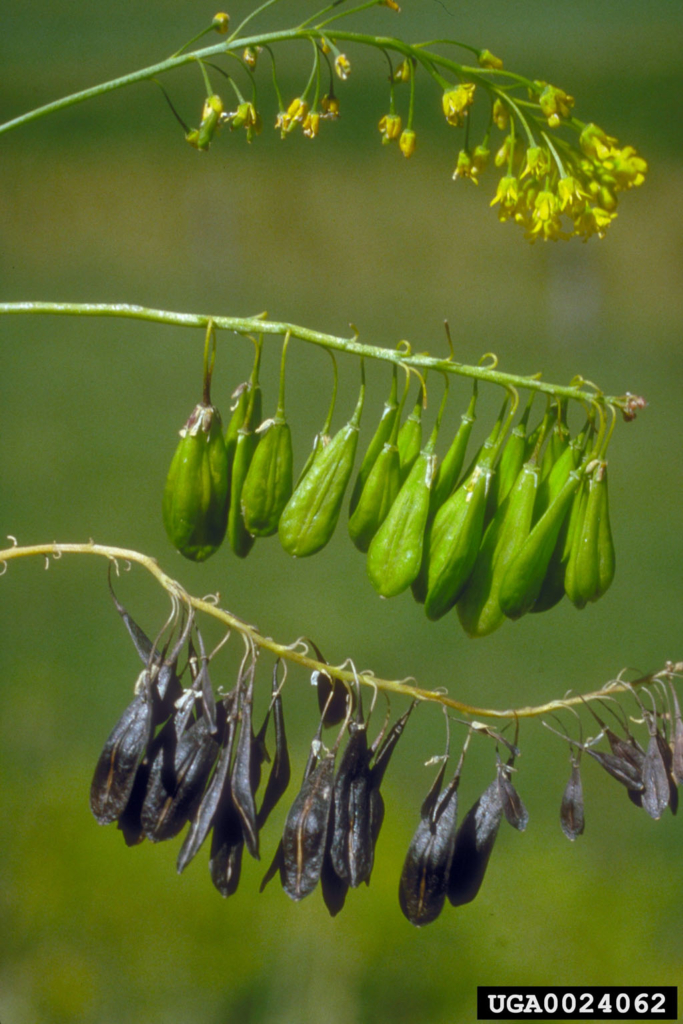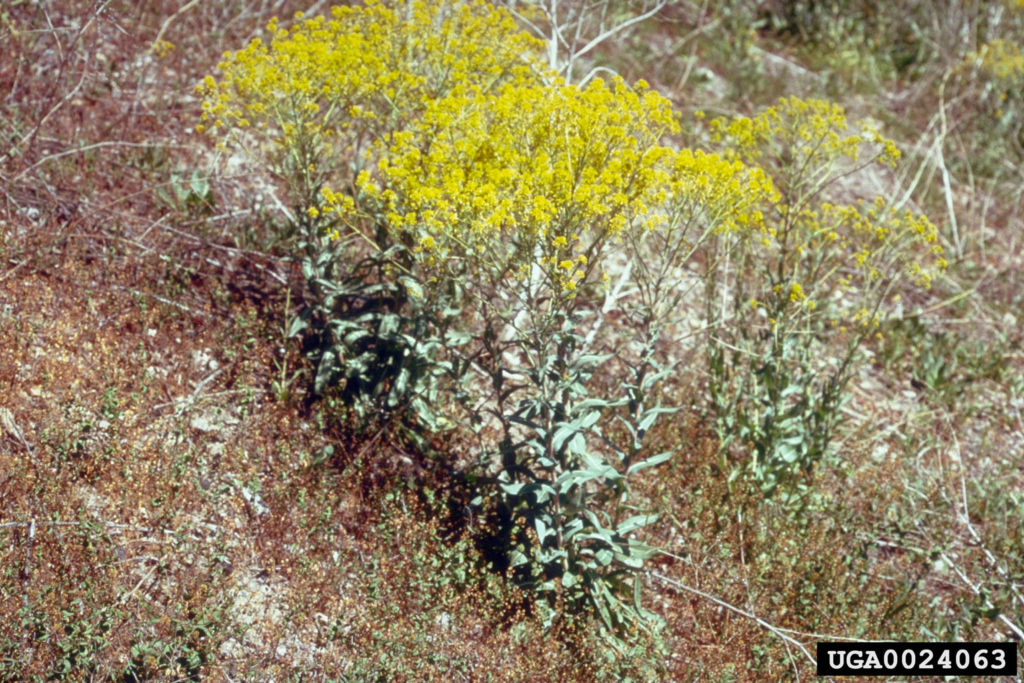Dyer’s Woad
Isatis tinctoria
Plant Description
A winter annual, biennial, or short-lived perennial mustard with a 3 to 5 foot deep taproot. Basal rosette with bluish green leaves; stem leaves are lance shaped, alternate, and not stalked; all leaves have a cream-colored mid-vein. Small yellow flowers with 4 sepals, 4 petals, and 6 stamens.
Plant Details
| Life Forms | |
|---|---|
| Habitats | |
| ODA Listing | |
| Suggested Actions | |
| Shade Preference | |
| Mature Height | 1-4' |
| Distribution | According to ODA, There are multiple historic sites scattered throughout Oregon that have been eradicated. Currently, Klamath and Lake Counties have the most infested acres. |
| Control | Hand pulling and digging after plant bolts but before seeds are produced, are recommended control options for difficult terrain. Active mowing will control orchard populations. It can be cultivated twice a year for control- once before seed prodcution and a second time in late fall. |
| Reproduction and Spread | Reproduces by seed; each plant can produce 350-500 seeds, some produce up to 10,000 seeds. |
| Introduced | Native to Russia, introduced to Utah from Ireland in 1910. |
| Look Alikes | other mustards, especially yellow or common mustard |
| Impact | This allelopathic plant forms dense clolines in rangelands, damages crops, and destroys wildlife habitats. |
| More Info |
© Marion Soil and Water Conservation District. All Rights Reserved.


